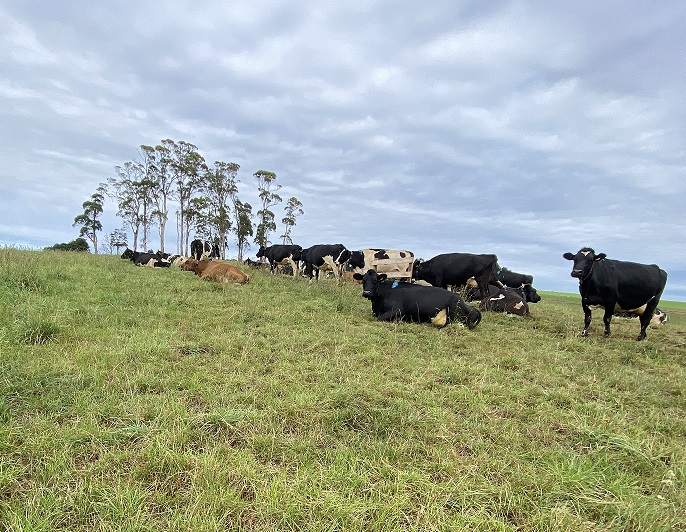Project details
Status: Current
At a glance
- Sustainable growth of intensified pasture systems requires careful management.
- Virtual-fencing is an emerging technology with the potential to revolutionise livestock management.
- This project aims to demonstrate the implementation of the Halter virtual-fencing system on Tasmanian dairy farms and quantify the potential benefits.
Virtual fencing
Virtual fencing (VF) is a disruptive technology, a game-changer, that can help mitigate the risks of intensified pastoral dairy production while improving farming productivity and profitability.
The technology manages grazing cattle behind a ‘virtual boundary’ that has been set via GPS by using audio and electrical cues, rather than physical fencing.
Evaluating VF
Halter, a start-up based in New Zealand have designed a ergonomic smart collar. Commercial deployment of VF is underway on several farms in Tasmania after extensive roll-out in New Zealand.
This project aims to evaluate the effectiveness of this breakthrough technology for overcoming labour shortages, increasing pasture consumption, and improving the health and welfare of our grass-fed livestock.
Ensuring sustainable growth for industry
Tasmania’s pasture-based dairy and beef sectors continue to intensify. This means cattle are being managed in fewer but larger herds.
The state has the largest dairy herd sizes in Australia. To be sustainable, the growth of intensified pasture systems requires careful management of the resource base, including the people, environment, and animals involved.

Potential application of VF
Potential uses of VF include:
- Movement of cows to and from the dairy
- Precise and automated grazing allocations
- Temporary or permanent exclusion of cattle from specific locations
- Management of several mobs of cattle.
These applications can contribute positively to the sustainability and profitability of the dairy industry by:
- Reducing labour
- Attracting and retaining future farming leaders
- Improving cow health through better controlled pasture-based nutrition
- Enhancing animal productivity and efficiencies by controlling livestock movement at a sub-herd level
- Optimising the quantity and quality of homegrown feed-base without increased inputs (e.g., fertiliser)
- Contributing to environment stewardship through the exclusion of cows from waterways.
For more information contact:
Acknowledgements:
This project is funded by the Department of Natural Resources and Environment Tasmania.